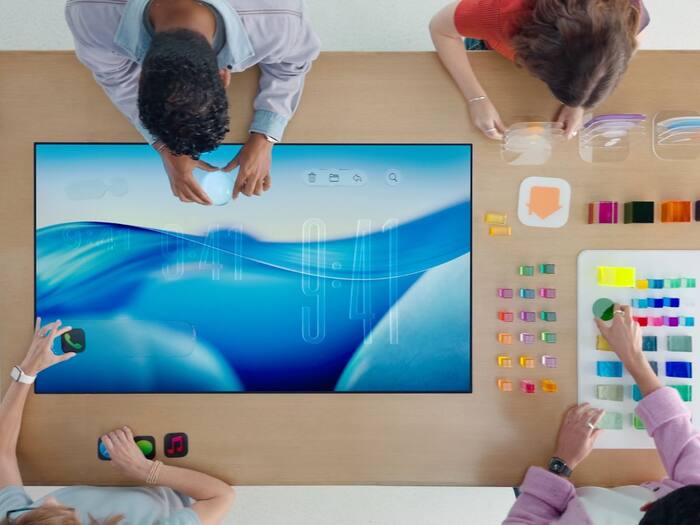
Written By Deepti Ratnam
Published By: Deepti Ratnam | Published: Jun 10, 2025, 10:41 AM (IST)

Apple introduced a design innovation at its first day of WWDC 2025 and it doesn’t just look beautiful, it also feels alive. The new design called ‘Liquid Glass’ is one of the most significant design overhauls across Apple’s ecosystem in recent years. The tech giant brought a fluid, responsive, and more immersive experience with Liquid Glass. The design is introduced to iOS 26, macOS Tahoe, iPadOS 26, visionOS 26, watchOS 26, and tvOS 26.
The innovative design, Liquid Glass doesn’t just feels like a visual refresh, but it is a material, in a digital sense. It behaves more like something tangible. It doesn’t work as a static layer and hence the interface now responds to your environment, your device, and your touch. It mimics the properties of actual glass which is translucent, reflective, and reactive to light, however, in a digital form.
The new design adds a level of realism in a way that buttons, sliders, and backgrounds feel as if they are floating in space rather than just sitting on a screen. The Liquid Glass changes dynamically depending on lightning conditions. For example it glows in bright, softening in dark, and always remain legible and elegant.
Apple’s “Liquid Glass” is the holy grail of software design.#WWDC25 pic.twitter.com/0VbTZXz5NN
— Apple Design (@TheAppleDesign) June 9, 2025
Interestingly, Liquid Glass is so integrated ito every corner of Apple’s software that you will notice it not just I flashy lock screens or wallpapers, but also in everyday interface elements including tab bars, control centres, app buttons, switches, and sliders.
Apple’s redesigning now aligns with the interface shapes so rather than sharp, box edges, now everything flows with curved of iPhones, iPads, and Macs. It allows the interface to be more cohesive and hardware aware look.
With the arrival of Liquid Glass, Navigation has also receive a thoughtful upgrade. For example, if your iPhone is running iOS 26, then your tab bars will shrink when you scroll down, giving you more space to focus on content. As soon as you scroll back up, the navigation reappears smoothly.
On iPads and Macs, sidebars now refract and reflect their surroundings. Whether it’s your wallpaper or a background image, it is giving a new sense of spatial awareness and depth.
One of the standout achievements of Liquid Glass is its consistency. The tech giant introduced across all its platforms including Apple Watch, iPhone, Mac, iPad, Apple TV, or Vision Pro. Each platform intercepts Liquid Glass in a way that it suits its form.
For app developers, Liquid Glass offers exciting new possibilities. Apple has updated its development tools including SwiftUI, UIKit, and AppKit in order to support this design shift. Developers can now easily incorporate these materials and behaviors into their own apps. That means third-party apps will begin to feel just as fluid, dynamic, and immersive as Apple’s native ones. This democratizes the visual evolution across the App Store.
In many ways, Liquid Glass reflects Apple’s long-term vision: interfaces that blur the line between screen and space. With the Vision Pro and visionOS, that boundary becomes literal. The introduction of Liquid Glass across devices hints that Apple is laying the groundwork for a more spatially aware ecosystem, where UI doesn’t just live on screens, but also within your environment.